“È raro trovare un interno così contemporaneo a Venezia. Abbiamo cercato di creare un nuovo rapporto con la città per i proprietari – che soddisfi le loro esigenze, ma rifletta ancora la sua storia e cultura.”
Articolo di HANNAH BOOTH
Foto CAROLA RIPAMONTI
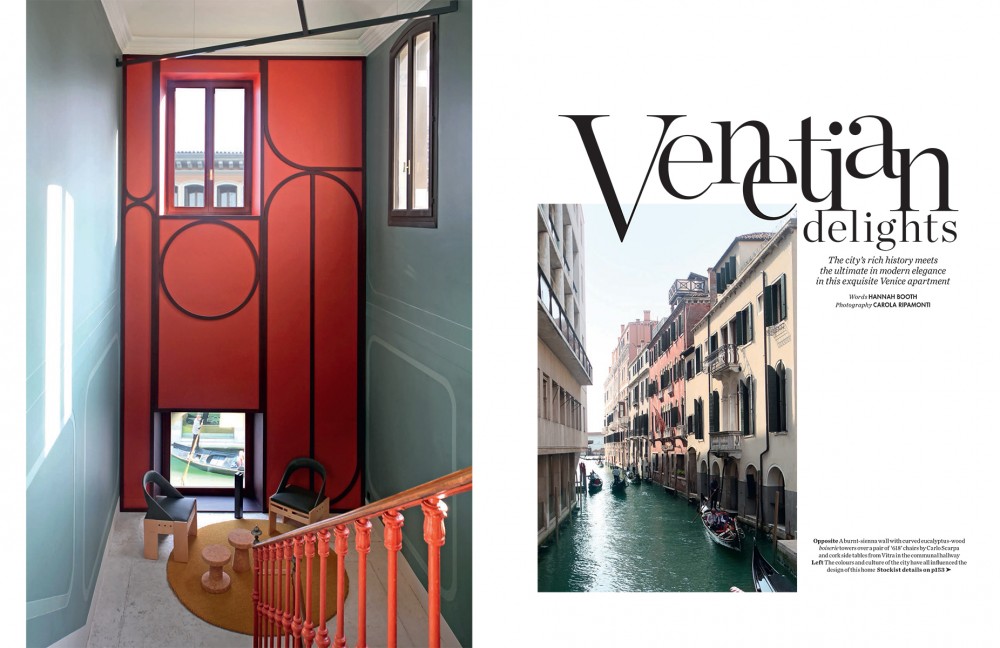
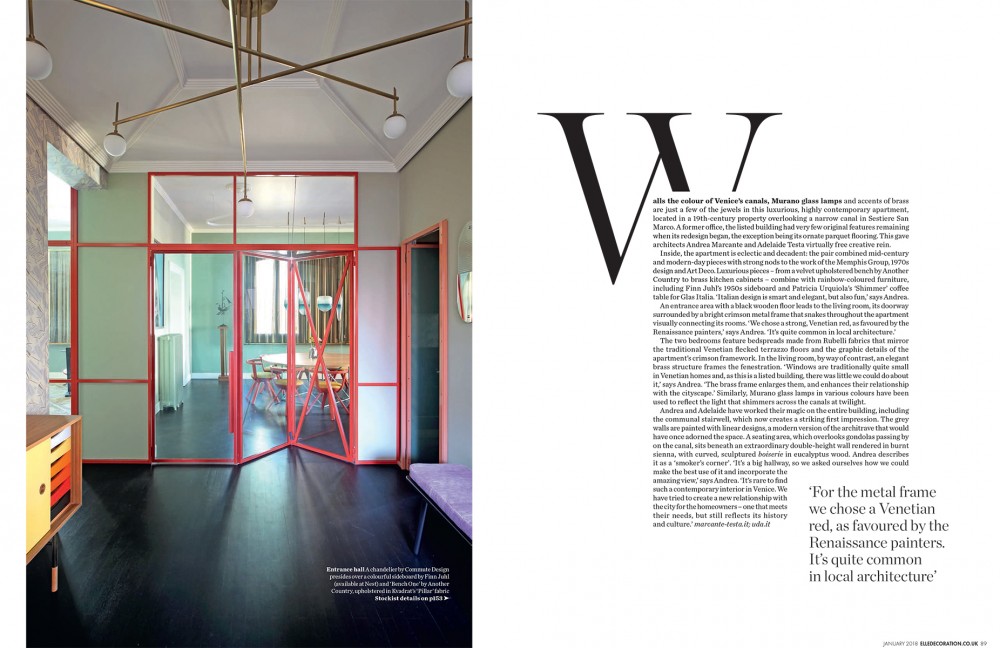
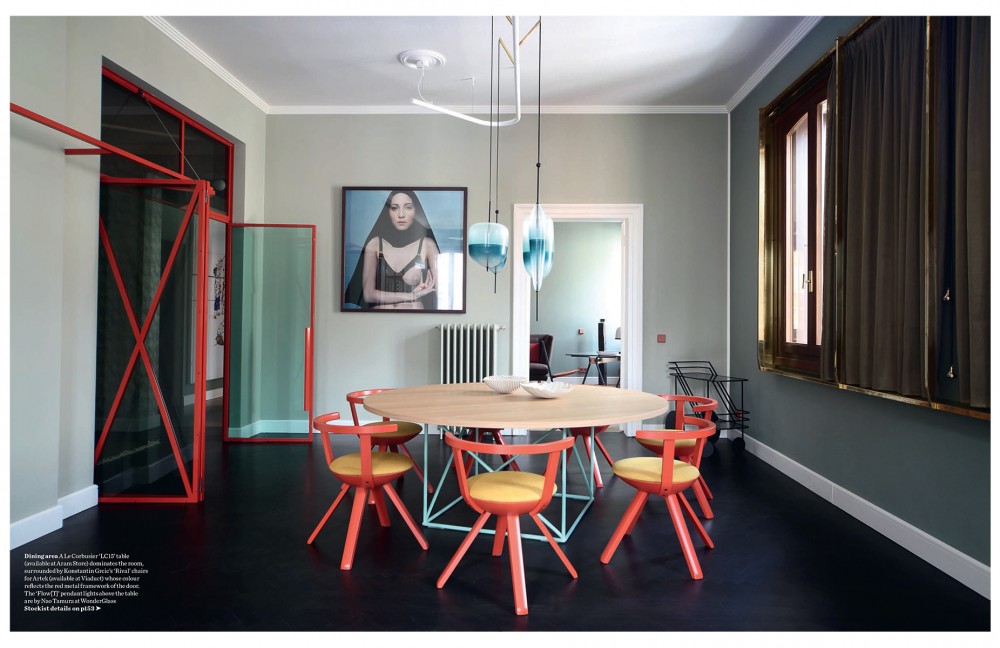
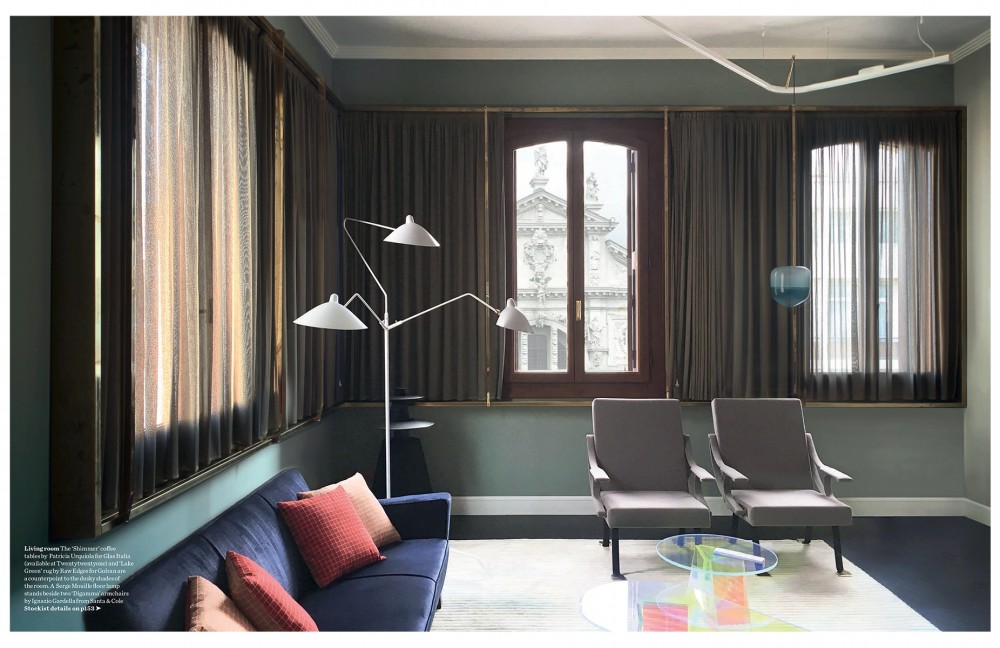
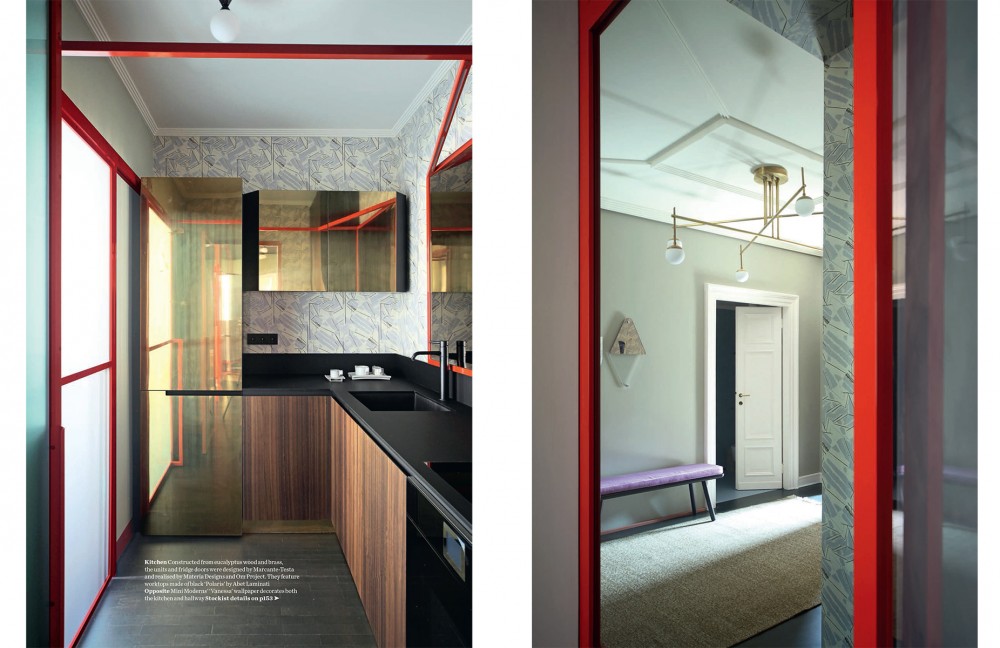
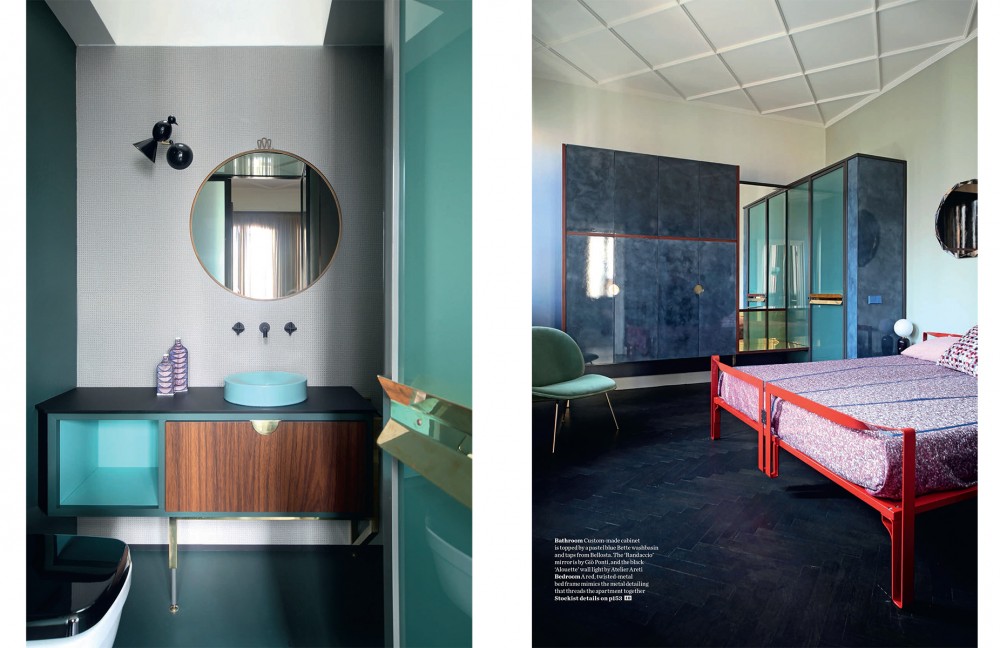
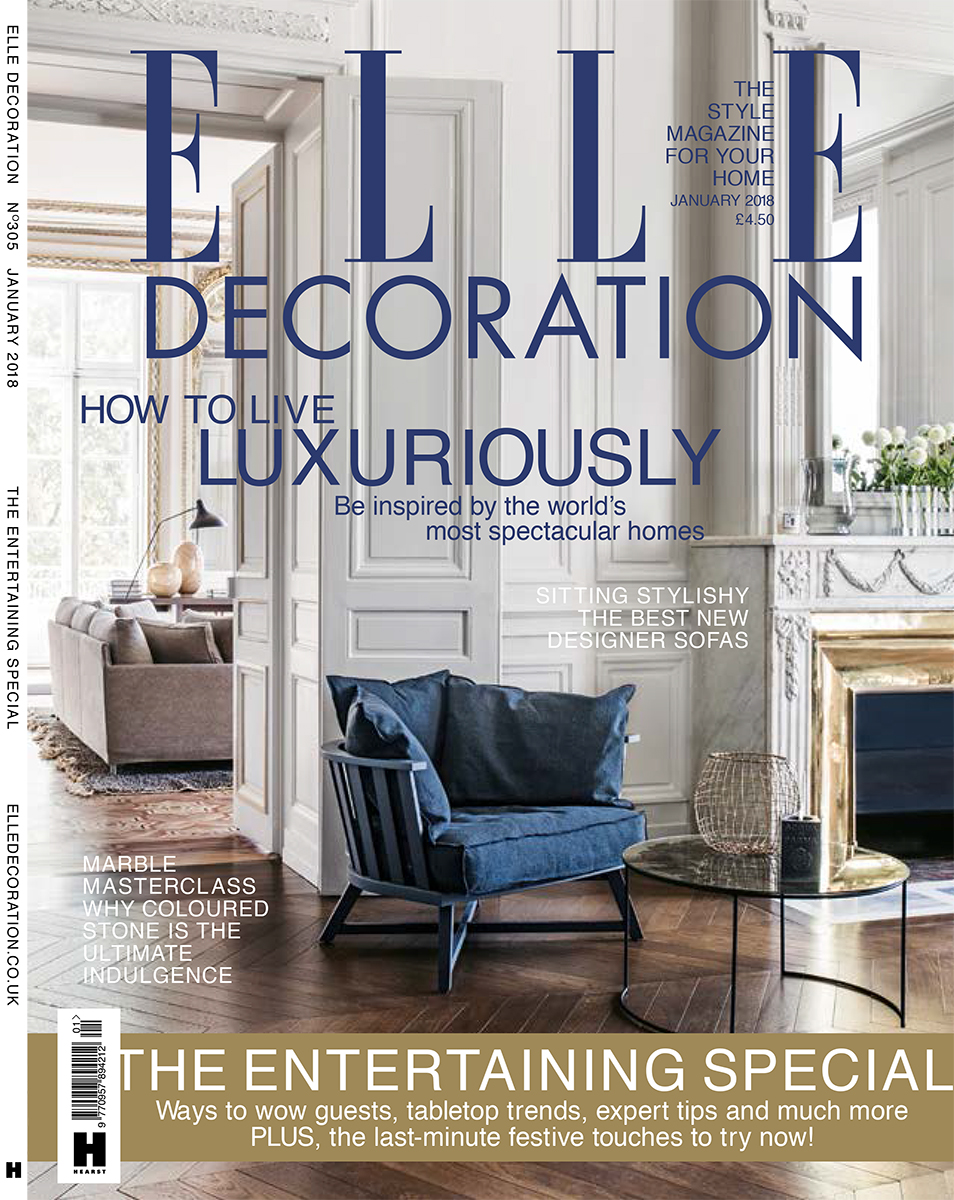
(traduzione dall’articolo originale di Hannah Booth)
Pareti del colore dei canali di Venezia, lampade in vetro di Murano e accenti di ottone sono solo alcuni dei gioielli di questo lussuoso appartamento altamente contemporaneo, situato in una proprietà del 19° secolo che si affaccia su uno stretto canale nel Sestiere San Marco. Un ex ufficio, l’edificio elencato aveva pochissime caratteristiche originali rimanenti all’inizio dei lavori di ristrutturazione, ad eccezione del suo parquet decorato. Ciò ha consentito agli architetti Andrea Marcante e Adelaide Testa di dare libero sfogo creativo.
All’interno, l’appartamento è eclettico e decadente: la coppia combina pezzi di metà secolo e di oggi con forti cenni al lavoro del gruppo Memphis, al design anni ’70 e all’Art Deco. Pezzi di lusso – da una panca imbottita in velluto di Another Country alla cucina in ottone – abbinati a mobili color arcobaleno, tra cui la madia di Finn Juhl degli anni ’50 e il tavolino da caffè “Shimmer” di Patricia Urquiola per Glas Italia. “Il design italiano è intelligente ed elegante, ma anche divertente”, afferma Andrea.
Un’area d’ingresso con un pavimento di legno nero conduce al soggiorno, la sua porta circondata da una luminosa cornice di metallo cremisi che serpeggia in tutto l’appartamento collegando visivamente le sue stanze. “Abbiamo scelto un rosso veneziano forte, il favorito dai Pittori del Rinascimento”, dice Andrea. “È abbastanza comune nell’architettura locale.”
Le due camere da letto sono dotate di copriletti realizzati con tessuti Rubelli che rispecchiano i tradizionali pavimenti in terrazzo veneziano e i dettagli grafici della struttura cremisi dell’appartamento. Nel soggiorno, per contrasto, un’elegante struttura in ottone incornicia la finestratura. “Le finestre sono tradizionalmente piuttosto piccole nelle case veneziane e, poiché si tratta di un edificio vincolato, c’era ben poco da fare”, dice Andrea. “La cornice in ottone li ingrandisce e migliora il loro rapporto con il paesaggio urbano.” Allo stesso modo, le lampade in vetro di Murano in vari colori sono state usate per riflettere la luce che luccica attraverso i canali al crepuscolo.
Andrea e Adelaide hanno esteso la loro magia sull’intero edificio, compreso lo scalone condominiale, che ora regala un effetto scenografico. Le pareti sono dipinte con disegni lineari, una versione moderna delle cornici che avrebbero un tempo adornato lo spazio. Una zona salotto, che si affaccia sulle gondole che passano sul canale, si trova sotto una straordinaria parete a doppia altezza in terra di Siena bruciata, con boiserie curve e scolpite in legno di eucalipto. Andrea lo descrive come un “angolo per fumatori”. “È un grande pianerottolo, quindi ci siamo chiesti come poterlo sfruttare al meglio e incorporare la vista straordinaria”, afferma Andrea. “È raro trovare un interno così contemporaneo a Venezia. Abbiamo cercato di creare un nuovo rapporto con la città per i proprietari – che soddisfi le loro esigenze, ma rifletta ancora la sua storia e cultura”.
—
“The city’s rich history meets the ultimate in modern elegance in this exquisite Venice apartment”
Walls the colour of Venice’s canals, Murano glass lamps and accents of brass are just a few of the jewels in this luxurious, highly contemporary apartment, located in a 19th-century property overlooking a narrow canal in Sestiere San Marco. A former office, the listed building had very few original features remaining when its redesign began, the exception being its ornate parquet flooring. This gave architects Andrea Marcante and Adelaide Testa virtually free creative rein.
Inside, the apartment is eclectic and decadent: the pair combined mid-century and modern-day pieces with strong nods to the work of the Memphis Group, 1970s design and Art Deco. Luxurious pieces – from a velvet upholstered bench by Another Country to brass kitchen cabinets – combine with rainbow-coloured furniture, including Finn Juhl’s 1950s sideboard and Patricia Urquiola’s ‘Shimmer’ coffee table for Glas Italia. ‘Italian design is smart and elegant, but also fun,’ says Andrea.
An entrance area with a black wooden floor leads to the living room, its doorway surrounded by a bright crimson metal frame that snakes throughout the apartment visually connecting its rooms. ‘We chose a strong, Venetian red, as favoured by the Renaissance painters,’ says Andrea. ‘It’s quite common in local architecture.’
The two bedrooms feature bedspreads made from Rubelli fabrics that mirror the traditional Venetian flecked terrazzo floors and the graphic details of the apartment’s crimson framework. In the living room, by way of contrast, an elegant brass structure frames the fenestration. ‘Windows are traditionally quite small in Venetian homes and, as this is a listed building, there was little we could do about it,’ says Andrea. ‘The brass frame enlarges them, and enhances their relationship with the cityscape.’ Similarly, Murano glass lamps in various colours have been used to reflect the light that shimmers across the canals at twilight.
Andrea and Adelaide have worked their magic on the entire building, including the communal stairwell, which now creates a striking first impression. The grey walls are painted with linear designs, a modern version of the architrave that would have once adorned the space. A seating area, which overlooks gondolas passing by on the canal, sits beneath an extraordinary double-height wall rendered in burnt sienna, with curved, sculptured boiserie in eucalyptus wood. Andrea describes it as a ‘smoker’s corner’. ‘It’s a big hallway, so we asked ourselves how we could make the best use of it and incorporate the amazing view,’ says Andrea. ‘It’s rare to find such a contemporary interior in Venice. We have tried to create a new relationship with the city for the homeowners – one that meets their needs, but still reflects its history and culture.’


